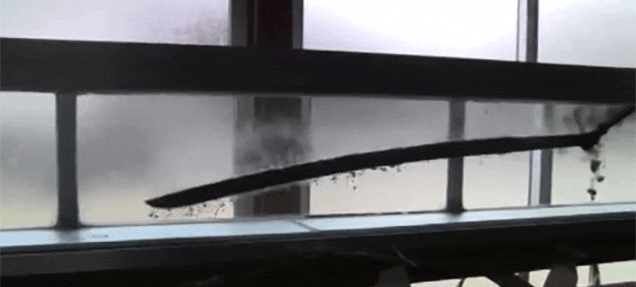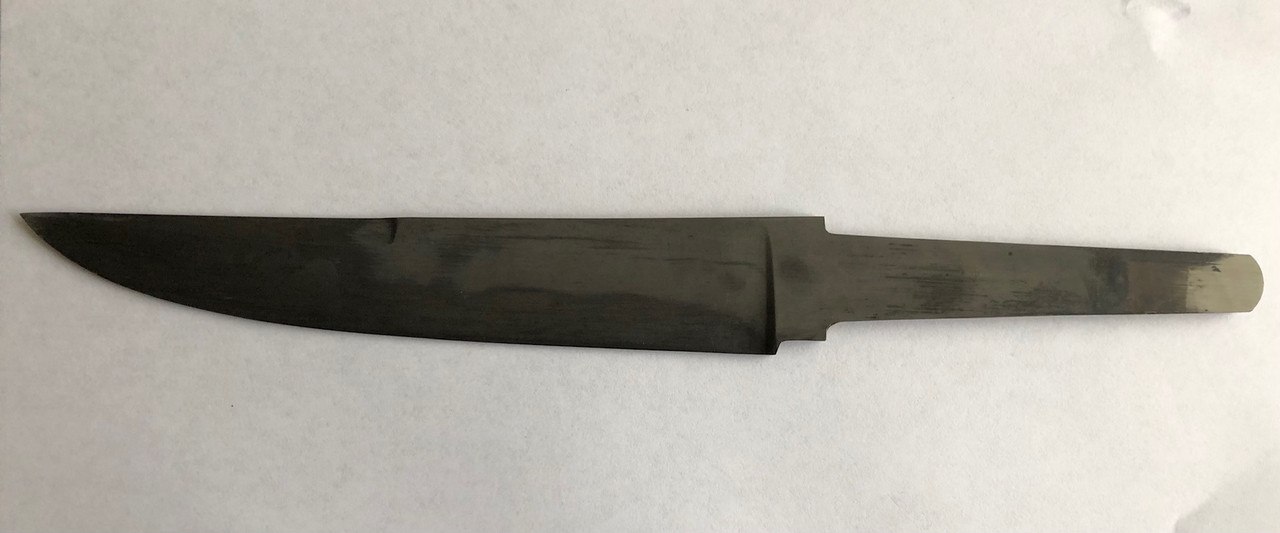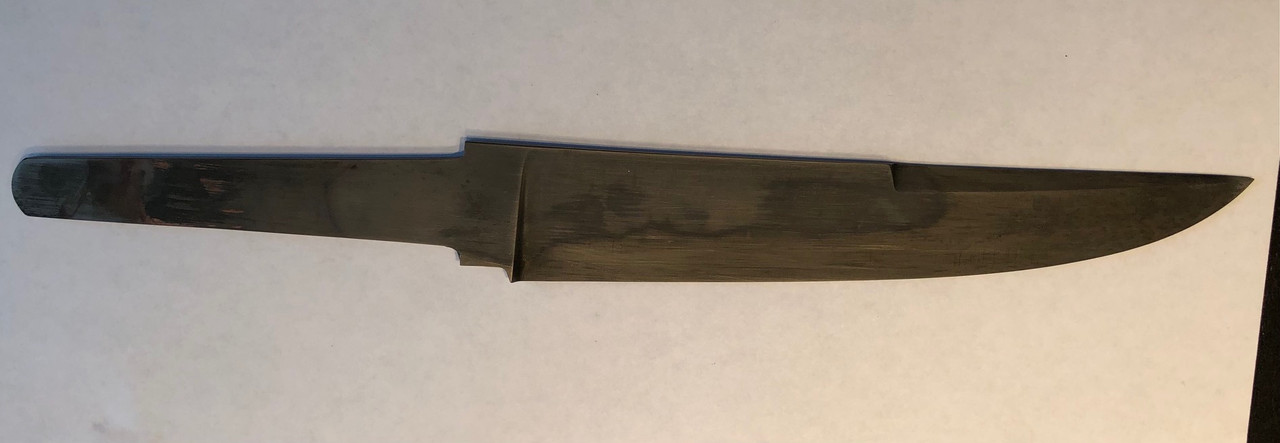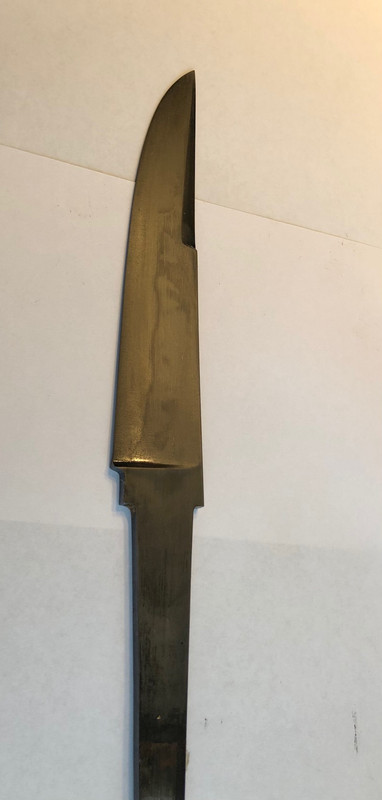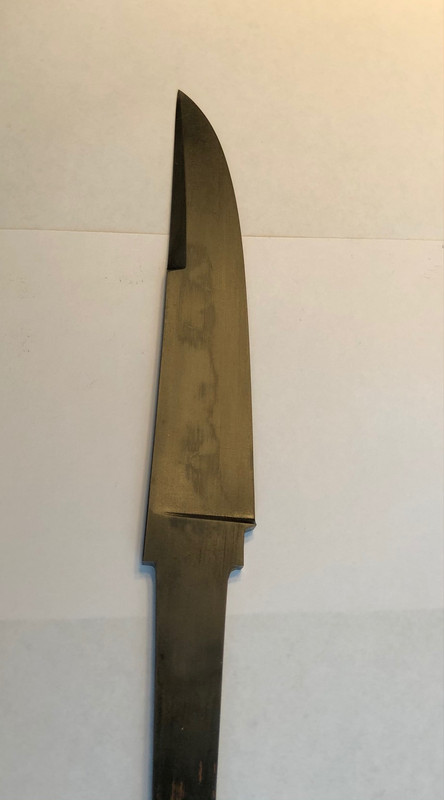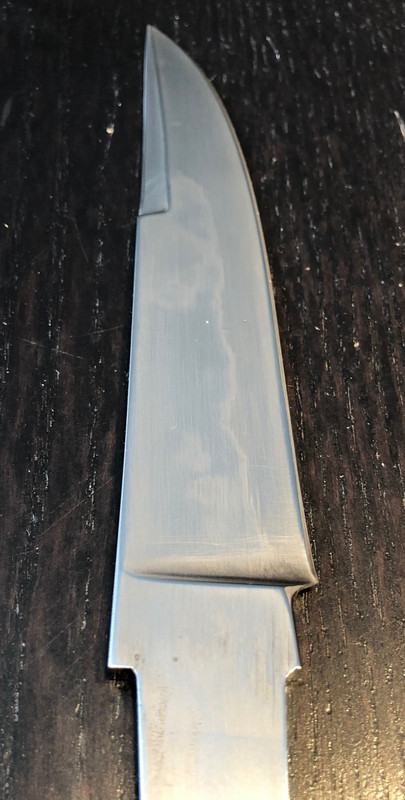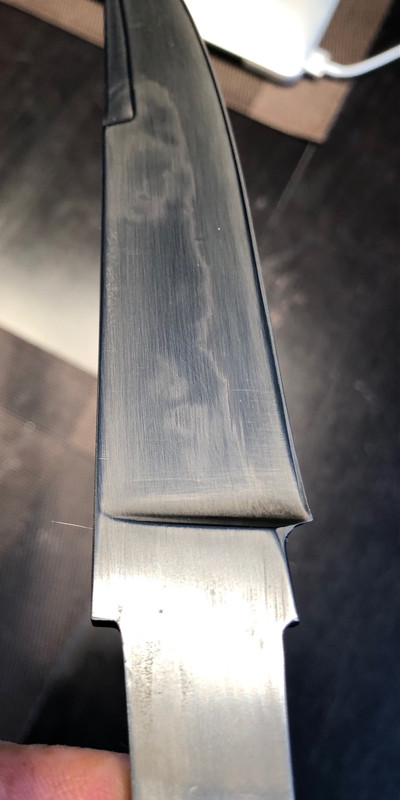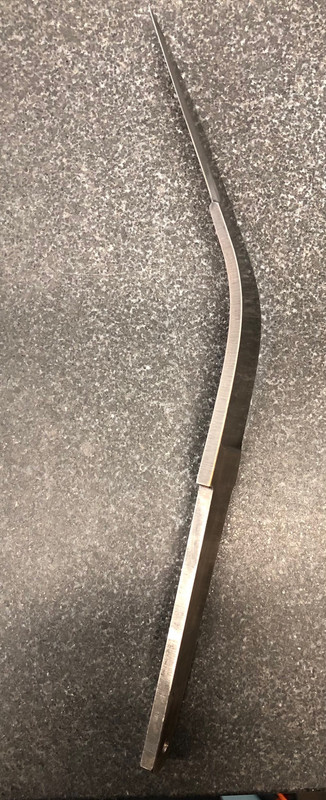Hi again,
Just wanted to close the loop and mention that following your advice I have successfully quenched a 1095 test/sacrificial blade in brine. AWSOME!!!
I followed
 Stacy E. Apelt - Bladesmith
Stacy E. Apelt - Bladesmith
recommendation and went with a 7% brine and did an interrupted quench. I also finished the quench in canola oil, don’t know if that kept the blade from shattering, but I thought, may as well go with it and see what happens. After that, tempered at 400F, twice for 2 hours. And I’m talking right away, say 2 min the most, after the quench, as instructed.
The next day, I put the blade in acid for a few minutes, just to see if I can see a hamon. Please see below, but it looks to me that whatever that activity is, it followed the clay pretty close, I say 1/8” inside of the clay line.
Other thing to mention, I went with 1440F for the aus temp and soaked for about 15 min, instead of recomended 1475F. Just to keep the quench less violent, or at least that was my reasoning/understanding from reading other posts.
Also, the brine was at 120F and oil at 130F.
The quench even gave the blade a sori. This is a short blade, 6.2” from ricasso, but i think this happened because of the distal taper and the false edge on the spine, a few inches from the tip.
Here are some pics, please let me know if you think that is a hamon, I think it is, but just in case. It follows the same pattern on both side of the blade. IT HAS TO BE...
Thanks again guys, you helped me end up with a one piece blade after a brine quench, and hopefully my first hamon, I’m elated!!!
Constantin

